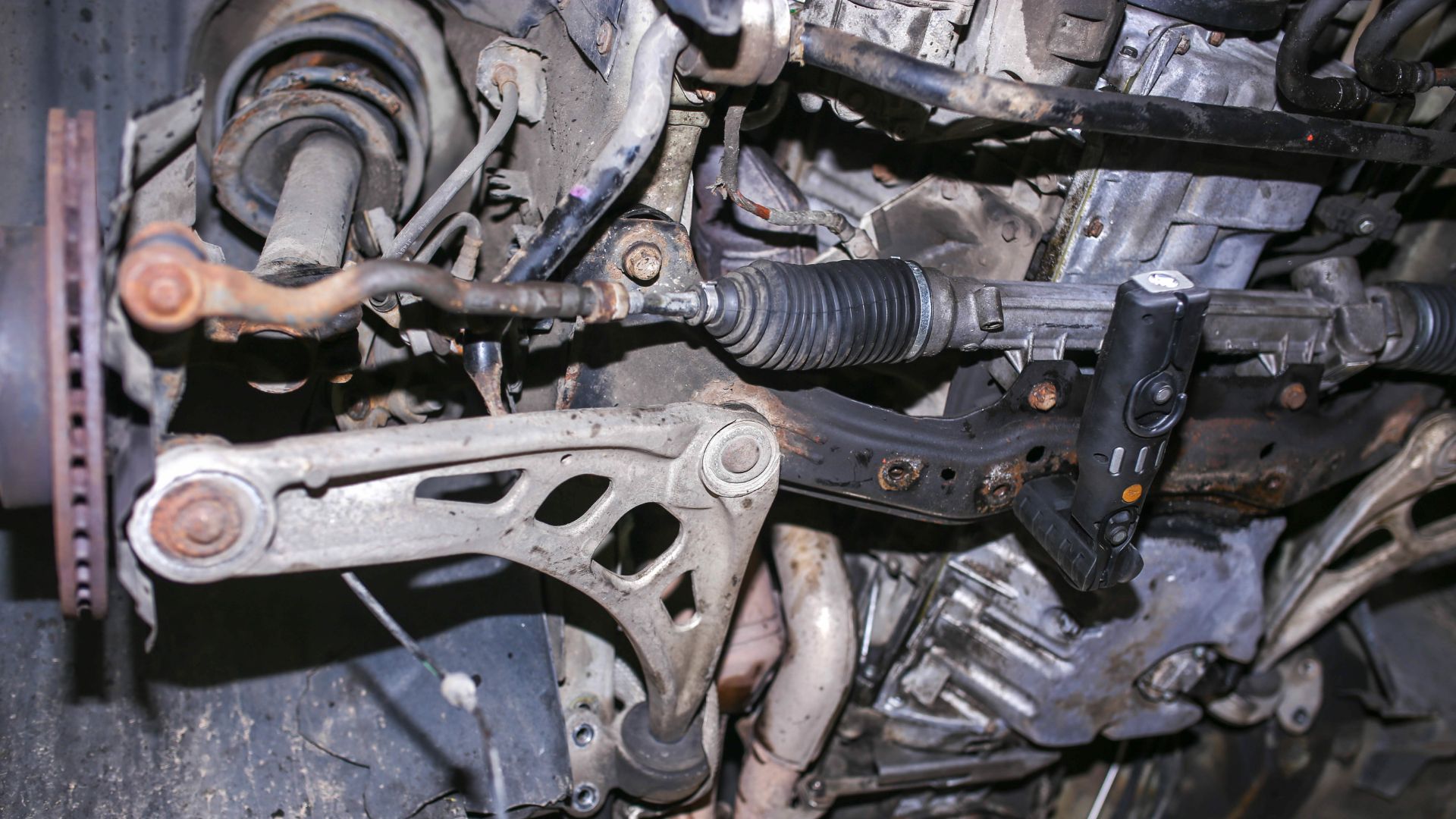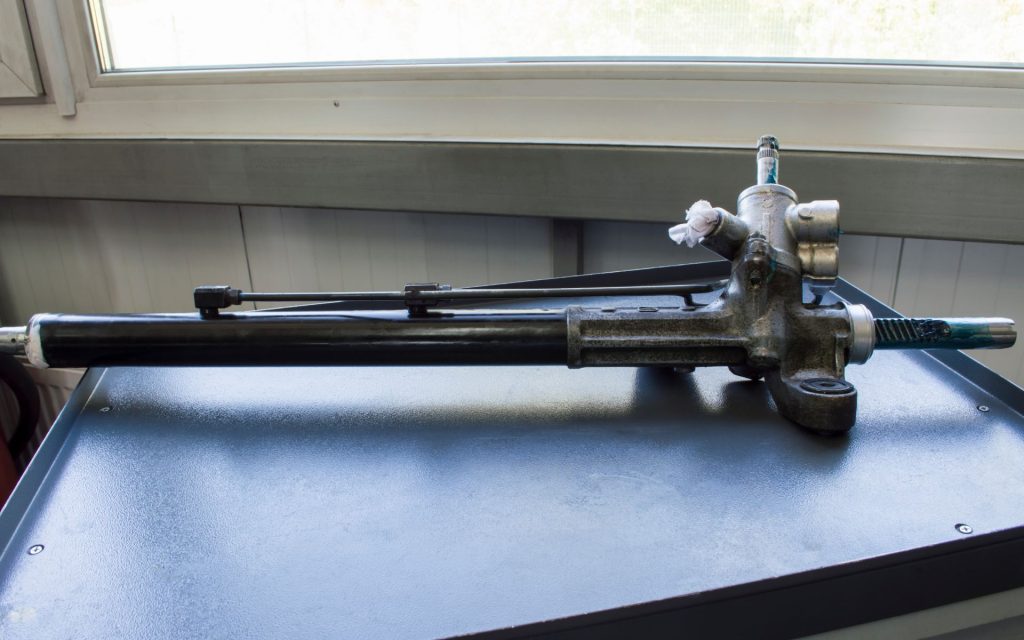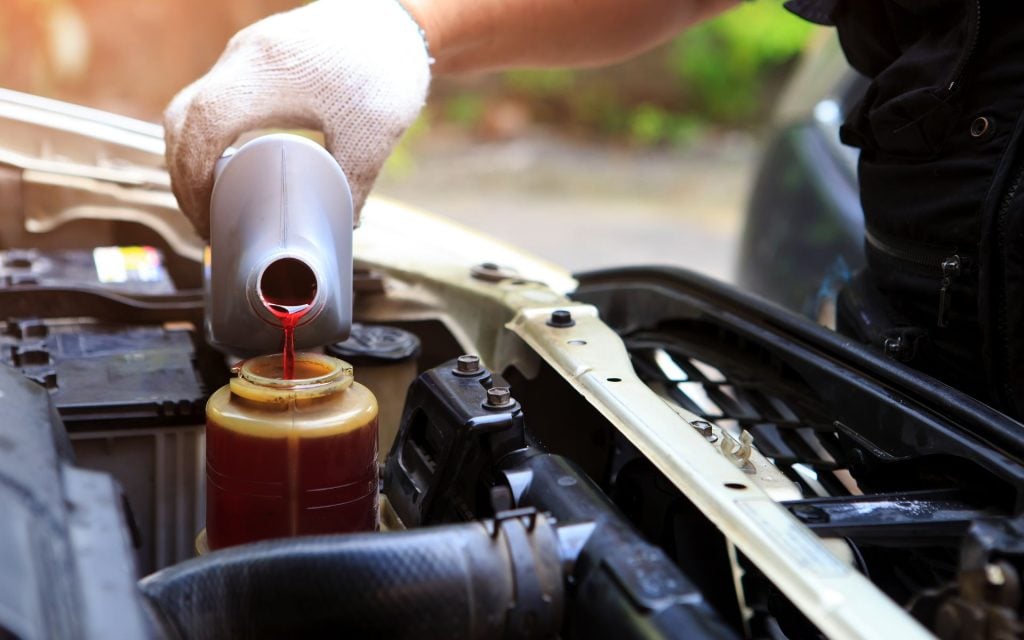Bad rack and pinion symptoms explained
Recognize signs of a faulty rack and pinion system.

With the technological advancement in the US automotive field, the old-school ball steering system was replaced with a rack and pinion one. This system allows your wheels to turn from one side to the opposite side fully without much steering wheel wiggle room.
Combined with power steering, the rack and pinion steering system enable smooth wheel rotation and steering precision. However, what happens once it starts to wear off? That’s what our team is here to answer by leading you through the bad rack and pinion symptoms so you can recognize and deal with the issue on time.
What’s a rack and pinion system?

The rack and pinion system is the most commonly used steering system that translates the circular motion of the steering wheel into linear motion to rotate the wheels in a certain direction. At the heart of the system, we have a rack that’s attached to the tie rod which further connects to the steering arm.
On the other hand, the pinion is a circular gear that moves in the direction in which you rotate the steering wheel. So, the circular gear attaches to the linear gear or a rack to translate the circular rotation of the steering wheel into linear motion.
This linear motion pushes the tie rod in one direction or the other, therefore affecting the steering arm to move the wheels. For this steering system to work, it needs to be firm and stable, so the steering arm is connected to the car frame for utmost support.
So, if you rotate the steering wheel to the right, the motion transfers to the pinion which also rotates to the right and aligns with the rack gear. This motion moves the rack in the opposite direction and the movement transfers through the tie rod and the steering arm to finally move the wheel toward the right.
What happens if the rack and pinion system fails?
Now that you understand that a rack and pinion system is the heart of your vehicle’s steering, it’s time to consider the consequences. If the rack and pinion go bad or loose, your steering wheel will feel loose and you’ll have a lot of wiggle room.
On top of that, your tires will feel odd and won’t steer as precisely as they should. It’s a dangerous thing and could lead to bigger trouble in case you lose control of the steering completely. Much like with the bad tie rod symptoms, your tires will feel like out of alignment and your steering won’t feel as smooth.
Loose and imprecise steering are the worst things that could happen in case of rack and pinion damage, so it’s crucial to deal with the problem as soon as you spot the signs.
Main symptoms of a bad rack and pinion system

To prevent feeling insecure and maintain precise and smooth steering, the most important thing is to recognize bad rack and pinion symptoms on time. To help you with that, we’ll go over the main symptoms which include:
- Power steering fluid leaks
- Loose steering
- Tight or hard to turn the steering wheel
- Steering noises
The only problem here is that rack and pinion issues could be interpreted as wheels out of alignment, tie rod issues, or even control arm issues sometimes. So, it’s important to drive your car to the mechanic as soon as you notice any of these symptoms to find the exact source of the problem.
Another thing you might notice if your rack and pinion are out of sync is that the tires will wear off unevenly. You might also get a sense of wobbly tires, so that’s another thing to look out for when it comes to rack and pinion issues.
Power steering fluid leaks under the car
Since the rack and pinion system is below your car’s floor and at the center between the wheels, you might find power steering fluid leaks under your car. It might appear as a puddle of red fluid that smells like burned-out rubber.
Of course, it doesn’t have to be a sign of a bad rack and pinion system alone, as it can also occur from damaged pump or fluid lines. Still, if it’s also followed by other symptoms listed, it’s possibly caused by a bad rack and pinion system.
The position of the leak is therefore crucial, so try to park your car out carefully and see if the leak puddle is at the center between the wheels.
Loose steering
Another sign could be loose steering if you don’t feel the proper connection between the steering wheel rotation and the way the wheels are turning. This is mostly caused by a failed rack as the wheels get out of alignment with it and it loses steering control.
You can feel loose steering through the steering wheel as well. It might get difficult to keep the vehicle in the same direction, and the minimum steering wheel rotation could trigger uncontrolled steering movement.
Tight steering wheel and difficulties turning it
Due to a bad rack and pinion, your steering sensation could either be loose or tight. If it seems tight, you might have trouble rotating the steering wheel and it feels heavy, it’s the result of bad rack and pinion and power steering fluid leaks.
At moments, you might feel like the power steering system isn’t working, and it’s not the safest thing to do if you kept driving like that. You should check the power steering fluid level and try rotating your steering wheel in a full turn when stationary to check the nature of the problem.
Steering noises
In modern cars, the power steering system is a hydraulic system, so a leak caused by a damaged rack and pinion could cause steering noises. When the lubrication is gone, you might hear grinding and clicking noises as you rotate the steering wheel.
Steering noises can also be caused by a bad tie rod so the noise should be accompanied by another symptom so you can diagnose the rack and pinion problem.
Our take
Ultimately, knowing the bad rack and pinion symptoms can save you from potentially dangerous situations caused by poor steering. The best thing you can do is repair the rack and pinion system to prevent having to deal with poor steering precision or loose steering.
This guide can help diagnose the rack and pinion issue, and the rest is up to you as you can fix the problem by timely visiting your mechanic.
What are the signs of a damaged steering rack?
The main signs of a damaged steering rack are loose steering and the wobbly connection of the tires.
What happens when rack and pinion go out?
When the rack and pinion go out, you won’t have steering precision and control over your vehicle, so it’s best not to drive any further.
How do I test my steering rack?
You can test your steering rack by turning a full rotational cycle of the steering wheel and checking for steering noises and tightness.
Can you drive with a bad rack and pinion?
You can drive with a bad rack and pinion but it’s not advised as your steering control will be unreliable and imprecise.